-
MARKET FACTOR ANALYSIS
-
\r\n5.1. Value chain Analysis
-
\r\n5.2. Porter's
-
Five Forces Analysis
-
\r\n5.2.1. Bargaining Power of Suppliers
-
\r\n5.2.2.
-
Bargaining Power of Buyers
-
\r\n5.2.3. Threat of New Entrants
-
\r\n5.2.4.
-
Threat of Substitutes
-
\r\n5.2.5. Intensity of Rivalry
-
\r\n5.3. COVID-19
-
Impact Analysis
-
\r\n5.3.1. Market Impact Analysis
-
\r\n5.3.2. Regional
-
Impact
-
\r\n5.3.3. Opportunity and Threat Analysis
-
\r\n6. DIETARY FIBER
-
MARKET, BY TYPE (USD BILLION)
-
\r\n6.1. Soluble Fiber
-
\r\n6.2. Insoluble
-
Fiber
-
\r\n6.3. Functional Fiber
-
\r\n7. DIETARY FIBER MARKET, BY SOURCE
-
(USD BILLION)
-
\r\n7.1. Cereal Grains
-
\r\n7.2. Fruits and Vegetables
-
\r\n7.3.
-
Legumes
-
\r\n7.4. Nuts and Seeds
-
\r\n7.5. Additives
-
\r\n8. DIETARY
-
FIBER MARKET, BY APPLICATION (USD BILLION)
-
\r\n8.1. Food and Beverage
-
\r\n8.2.
-
Pharmaceuticals
-
\r\n8.3. Nutraceuticals
-
\r\n8.4. Animal Nutrition
-
\r\n9.
-
DIETARY FIBER MARKET, BY FORM (USD BILLION)
-
\r\n9.1. Powder
-
\r\n9.2.
-
Granules
-
\r\n9.3. Capsules
-
\r\n9.4. Tablets
-
\r\n10. DIETARY FIBER
-
MARKET, BY REGIONAL (USD BILLION)
-
\r\n10.1. North America
-
\r\n10.1.1.
-
US
-
\r\n10.1.2. Canada
-
\r\n10.2. Europe
-
\r\n10.2.1. Germany
-
\r\n10.2.2.
-
UK
-
\r\n10.2.3. France
-
\r\n10.2.4. Russia
-
\r\n10.2.5. Italy
-
\r\n10.2.6.
-
Spain
-
\r\n10.2.7. Rest of Europe
-
\r\n10.3. APAC
-
\r\n10.3.1. China
-
\r\n10.3.2.
-
India
-
\r\n10.3.3. Japan
-
\r\n10.3.4. South Korea
-
\r\n10.3.5. Malaysia
-
\r\n10.3.6.
-
Thailand
-
\r\n10.3.7. Indonesia
-
\r\n10.3.8. Rest of APAC
-
\r\n10.4.
-
South America
-
\r\n10.4.1. Brazil
-
\r\n10.4.2. Mexico
-
\r\n10.4.3.
-
Argentina
-
\r\n10.4.4. Rest of South America
-
\r\n10.5. MEA
-
\r\n10.5.1.
-
GCC Countries
-
\r\n10.5.2. South Africa
-
\r\n10.5.3. Rest of MEA
-
\r\n11.
-
COMPETITIVE LANDSCAPE
-
\r\n11.1. Overview
-
\r\n11.2. Competitive Analysis
-
\r\n11.3.
-
Market share Analysis
-
\r\n11.4. Major Growth Strategy in the Dietary Fiber
-
Market
-
\r\n11.5. Competitive Benchmarking
-
\r\n11.6. Leading Players
-
in Terms of Number of Developments in the Dietary Fiber Market
-
\r\n11.7. Key
-
developments and growth strategies
-
\r\n11.7.1. New Product Launch/Service
-
Deployment
-
\r\n11.7.2. Merger & Acquisitions
-
\r\n11.7.3. Joint Ventures
-
\r\n11.8.
-
Major Players Financial Matrix
-
\r\n11.8.1. Sales and Operating Income
-
\r\n11.8.2.
-
Major Players R&D Expenditure. 2023
-
\r\n12. COMPANY PROFILES
-
\r\n12.1.
-
Kerry Group
-
\r\n12.1.1. Financial Overview
-
\r\n12.1.2. Products Offered
-
\r\n12.1.3.
-
Key Developments
-
\r\n12.1.4. SWOT Analysis
-
\r\n12.1.5. Key Strategies
-
\r\n12.2.
-
DuPont
-
\r\n12.2.1. Financial Overview
-
\r\n12.2.2. Products Offered
-
\r\n12.2.3.
-
Key Developments
-
\r\n12.2.4. SWOT Analysis
-
\r\n12.2.5. Key Strategies
-
\r\n12.3.
-
Fiberstar
-
\r\n12.3.1. Financial Overview
-
\r\n12.3.2. Products Offered
-
\r\n12.3.3.
-
Key Developments
-
\r\n12.3.4. SWOT Analysis
-
\r\n12.3.5. Key Strategies
-
\r\n12.4.
-
Beneo
-
\r\n12.4.1. Financial Overview
-
\r\n12.4.2. Products Offered
-
\r\n12.4.3.
-
Key Developments
-
\r\n12.4.4. SWOT Analysis
-
\r\n12.4.5. Key Strategies
-
\r\n12.5.
-
Nutraceutical
-
\r\n12.5.1. Financial Overview
-
\r\n12.5.2. Products Offered
-
\r\n12.5.3.
-
Key Developments
-
\r\n12.5.4. SWOT Analysis
-
\r\n12.5.5. Key Strategies
-
\r\n12.6.
-
Hawkins Watts
-
\r\n12.6.1. Financial Overview
-
\r\n12.6.2. Products Offered
-
\r\n12.6.3.
-
Key Developments
-
\r\n12.6.4. SWOT Analysis
-
\r\n12.6.5. Key Strategies
-
\r\n12.7.
-
Cargill
-
\r\n12.7.1. Financial Overview
-
\r\n12.7.2. Products Offered
-
\r\n12.7.3.
-
Key Developments
-
\r\n12.7.4. SWOT Analysis
-
\r\n12.7.5. Key Strategies
-
\r\n12.8.
-
Ingredion
-
\r\n12.8.1. Financial Overview
-
\r\n12.8.2. Products Offered
-
\r\n12.8.3.
-
Key Developments
-
\r\n12.8.4. SWOT Analysis
-
\r\n12.8.5. Key Strategies
-
\r\n12.9.
-
ADM
-
\r\n12.9.1. Financial Overview
-
\r\n12.9.2. Products Offered
-
\r\n12.9.3.
-
Key Developments
-
\r\n12.9.4. SWOT Analysis
-
\r\n12.9.5. Key Strategies
-
\r\n12.10.
-
MGP Ingredients
-
\r\n12.10.1. Financial Overview
-
\r\n12.10.2. Products
-
Offered
-
\r\n12.10.3. Key Developments
-
\r\n12.10.4. SWOT Analysis
-
\r\n12.10.5.
-
Key Strategies
-
\r\n12.11. Sensus
-
\r\n12.11.1. Financial Overview
-
\r\n12.11.2.
-
Products Offered
-
\r\n12.11.3. Key Developments
-
\r\n12.11.4. SWOT Analysis
-
\r\n12.11.5.
-
Key Strategies
-
\r\n12.12. Tate and Lyle
-
\r\n12.12.1. Financial Overview
-
\r\n12.12.2.
-
Products Offered
-
\r\n12.12.3. Key Developments
-
\r\n12.12.4. SWOT Analysis
-
\r\n12.12.5.
-
Key Strategies
-
\r\n12.13. Frutarom
-
\r\n12.13.1. Financial Overview
-
\r\n12.13.2.
-
Products Offered
-
\r\n12.13.3. Key Developments
-
\r\n12.13.4. SWOT Analysis
-
\r\n12.13.5.
-
Key Strategies
-
\r\n12.14. Orafti
-
\r\n12.14.1. Financial Overview
-
\r\n12.14.2.
-
Products Offered
-
\r\n12.14.3. Key Developments
-
\r\n12.14.4. SWOT Analysis
-
\r\n12.14.5.
-
Key Strategies
-
\r\n12.15. Sunfiber
-
\r\n12.15.1. Financial Overview
-
\r\n12.15.2.
-
Products Offered
-
\r\n12.15.3. Key Developments
-
\r\n12.15.4. SWOT Analysis
-
\r\n12.15.5.
-
Key Strategies
-
\r\n13. APPENDIX
-
\r\n13.1. References
-
\r\n13.2.
-
Related Reports
-
\r\nLIST OF TABLES
-
\r\nTABLE 1. LIST OF ASSUMPTIONS
-
\r\nTABLE
-
NORTH AMERICA DIETARY FIBER MARKET SIZE ESTIMATES & FORECAST, BY TYPE, 2019-2035
-
(USD BILLIONS)
-
\r\nTABLE 3. NORTH AMERICA DIETARY FIBER MARKET SIZE ESTIMATES
-
& FORECAST, BY SOURCE, 2019-2035 (USD BILLIONS)
-
\r\nTABLE 4. NORTH AMERICA
-
DIETARY FIBER MARKET SIZE ESTIMATES & FORECAST, BY APPLICATION, 2019-2035 (USD
-
BILLIONS)
-
\r\nTABLE 5. NORTH AMERICA DIETARY FIBER MARKET SIZE ESTIMATES &
-
FORECAST, BY FORM, 2019-2035 (USD BILLIONS)
-
\r\nTABLE 6. NORTH AMERICA DIETARY
-
FIBER MARKET SIZE ESTIMATES & FORECAST, BY REGIONAL, 2019-2035 (USD BILLIONS)
-
\r\nTABLE
-
US DIETARY FIBER MARKET SIZE ESTIMATES & FORECAST, BY TYPE, 2019-2035 (USD
-
BILLIONS)
-
\r\nTABLE 8. US DIETARY FIBER MARKET SIZE ESTIMATES & FORECAST,
-
BY SOURCE, 2019-2035 (USD BILLIONS)
-
\r\nTABLE 9. US DIETARY FIBER MARKET SIZE
-
ESTIMATES & FORECAST, BY APPLICATION, 2019-2035 (USD BILLIONS)
-
\r\nTABLE
-
US DIETARY FIBER MARKET SIZE ESTIMATES & FORECAST, BY FORM, 2019-2035 (USD
-
BILLIONS)
-
\r\nTABLE 11. US DIETARY FIBER MARKET SIZE ESTIMATES & FORECAST,
-
BY REGIONAL, 2019-2035 (USD BILLIONS)
-
\r\nTABLE 12. CANADA DIETARY FIBER MARKET
-
SIZE ESTIMATES & FORECAST, BY TYPE, 2019-2035 (USD BILLIONS)
-
\r\nTABLE
-
CANADA DIETARY FIBER MARKET SIZE ESTIMATES & FORECAST, BY SOURCE, 2019-2035
-
(USD BILLIONS)
-
\r\nTABLE 14. CANADA DIETARY FIBER MARKET SIZE ESTIMATES &
-
FORECAST, BY APPLICATION, 2019-2035 (USD BILLIONS)
-
\r\nTABLE 15. CANADA DIETARY
-
FIBER MARKET SIZE ESTIMATES & FORECAST, BY FORM, 2019-2035 (USD BILLIONS)
-
\r\nTABLE
-
CANADA DIETARY FIBER MARKET SIZE ESTIMATES & FORECAST, BY REGIONAL, 2019-2035
-
(USD BILLIONS)
-
\r\nTABLE 17. EUROPE DIETARY FIBER MARKET SIZE ESTIMATES &
-
FORECAST, BY TYPE, 2019-2035 (USD BILLIONS)
-
\r\nTABLE 18. EUROPE DIETARY FIBER
-
MARKET SIZE ESTIMATES & FORECAST, BY SOURCE, 2019-2035 (USD BILLIONS)
-
\r\nTABLE
-
EUROPE DIETARY FIBER MARKET SIZE ESTIMATES & FORECAST, BY APPLICATION, 2019-2035
-
(USD BILLIONS)
-
\r\nTABLE 20. EUROPE DIETARY FIBER MARKET SIZE ESTIMATES &
-
FORECAST, BY FORM, 2019-2035 (USD BILLIONS)
-
\r\nTABLE 21. EUROPE DIETARY FIBER
-
MARKET SIZE ESTIMATES & FORECAST, BY REGIONAL, 2019-2035 (USD BILLIONS)
-
\r\nTABLE
-
GERMANY DIETARY FIBER MARKET SIZE ESTIMATES & FORECAST, BY TYPE, 2019-2035
-
(USD BILLIONS)
-
\r\nTABLE 23. GERMANY DIETARY FIBER MARKET SIZE ESTIMATES &
-
FORECAST, BY SOURCE, 2019-2035 (USD BILLIONS)
-
\r\nTABLE 24. GERMANY DIETARY
-
FIBER MARKET SIZE ESTIMATES & FORECAST, BY APPLICATION, 2019-2035 (USD BILLIONS)
-
\r\nTABLE
-
GERMANY DIETARY FIBER MARKET SIZE ESTIMATES & FORECAST, BY FORM, 2019-2035
-
(USD BILLIONS)
-
\r\nTABLE 26. GERMANY DIETARY FIBER MARKET SIZE ESTIMATES &
-
FORECAST, BY REGIONAL, 2019-2035 (USD BILLIONS)
-
\r\nTABLE 27. UK DIETARY FIBER
-
MARKET SIZE ESTIMATES & FORECAST, BY TYPE, 2019-2035 (USD BILLIONS)
-
\r\nTABLE
-
UK DIETARY FIBER MARKET SIZE ESTIMATES & FORECAST, BY SOURCE, 2019-2035
-
(USD BILLIONS)
-
\r\nTABLE 29. UK DIETARY FIBER MARKET SIZE ESTIMATES &
-
FORECAST, BY APPLICATION, 2019-2035 (USD BILLIONS)
-
\r\nTABLE 30. UK DIETARY
-
FIBER MARKET SIZE ESTIMATES & FORECAST, BY FORM, 2019-2035 (USD BILLIONS)
-
\r\nTABLE
-
UK DIETARY FIBER MARKET SIZE ESTIMATES & FORECAST, BY REGIONAL, 2019-2035
-
(USD BILLIONS)
-
\r\nTABLE 32. FRANCE DIETARY FIBER MARKET SIZE ESTIMATES &
-
FORECAST, BY TYPE, 2019-2035 (USD BILLIONS)
-
\r\nTABLE 33. FRANCE DIETARY FIBER
-
MARKET SIZE ESTIMATES & FORECAST, BY SOURCE, 2019-2035 (USD BILLIONS)
-
\r\nTABLE
-
FRANCE DIETARY FIBER MARKET SIZE ESTIMATES & FORECAST, BY APPLICATION, 2019-2035
-
(USD BILLIONS)
-
\r\nTABLE 35. FRANCE DIETARY FIBER MARKET SIZE ESTIMATES &
-
FORECAST, BY FORM, 2019-2035 (USD BILLIONS)
-
\r\nTABLE 36. FRANCE DIETARY FIBER
-
MARKET SIZE ESTIMATES & FORECAST, BY REGIONAL, 2019-2035 (USD BILLIONS)
-
\r\nTABLE
-
RUSSIA DIETARY FIBER MARKET SIZE ESTIMATES & FORECAST, BY TYPE, 2019-2035
-
(USD BILLIONS)
-
\r\nTABLE 38. RUSSIA DIETARY FIBER MARKET SIZE ESTIMATES &
-
FORECAST, BY SOURCE, 2019-2035 (USD BILLIONS)
-
\r\nTABLE 39. RUSSIA DIETARY
-
FIBER MARKET SIZE ESTIMATES & FORECAST, BY APPLICATION, 2019-2035 (USD BILLIONS)
-
\r\nTABLE
-
RUSSIA DIETARY FIBER MARKET SIZE ESTIMATES & FORECAST, BY FORM, 2019-2035
-
(USD BILLIONS)
-
\r\nTABLE 41. RUSSIA DIETARY FIBER MARKET SIZE ESTIMATES &
-
FORECAST, BY REGIONAL, 2019-2035 (USD BILLIONS)
-
\r\nTABLE 42. ITALY DIETARY
-
FIBER MARKET SIZE ESTIMATES & FORECAST, BY TYPE, 2019-2035 (USD BILLIONS)
-
\r\nTABLE
-
ITALY DIETARY FIBER MARKET SIZE ESTIMATES & FORECAST, BY SOURCE, 2019-2035
-
(USD BILLIONS)
-
\r\nTABLE 44. ITALY DIETARY FIBER MARKET SIZE ESTIMATES &
-
FORECAST, BY APPLICATION, 2019-2035 (USD BILLIONS)
-
\r\nTABLE 45. ITALY DIETARY
-
FIBER MARKET SIZE ESTIMATES & FORECAST, BY FORM, 2019-2035 (USD BILLIONS)
-
\r\nTABLE
-
ITALY DIETARY FIBER MARKET SIZE ESTIMATES & FORECAST, BY REGIONAL, 2019-2035
-
(USD BILLIONS)
-
\r\nTABLE 47. SPAIN DIETARY FIBER MARKET SIZE ESTIMATES &
-
FORECAST, BY TYPE, 2019-2035 (USD BILLIONS)
-
\r\nTABLE 48. SPAIN DIETARY FIBER
-
MARKET SIZE ESTIMATES & FORECAST, BY SOURCE, 2019-2035 (USD BILLIONS)
-
\r\nTABLE
-
SPAIN DIETARY FIBER MARKET SIZE ESTIMATES & FORECAST, BY APPLICATION, 2019-2035
-
(USD BILLIONS)
-
\r\nTABLE 50. SPAIN DIETARY FIBER MARKET SIZE ESTIMATES &
-
FORECAST, BY FORM, 2019-2035 (USD BILLIONS)
-
\r\nTABLE 51. SPAIN DIETARY FIBER
-
MARKET SIZE ESTIMATES & FORECAST, BY REGIONAL, 2019-2035 (USD BILLIONS)
-
\r\nTABLE
-
REST OF EUROPE DIETARY FIBER MARKET SIZE ESTIMATES & FORECAST, BY TYPE,
-
\r\nTABLE 53. REST OF EUROPE DIETARY FIBER MARKET
-
SIZE ESTIMATES & FORECAST, BY SOURCE, 2019-2035 (USD BILLIONS)
-
\r\nTABLE
-
REST OF EUROPE DIETARY FIBER MARKET SIZE ESTIMATES & FORECAST, BY APPLICATION,
-
\r\nTABLE 55. REST OF EUROPE DIETARY FIBER MARKET
-
SIZE ESTIMATES & FORECAST, BY FORM, 2019-2035 (USD BILLIONS)
-
\r\nTABLE
-
REST OF EUROPE DIETARY FIBER MARKET SIZE ESTIMATES & FORECAST, BY REGIONAL,
-
\r\nTABLE 57. APAC DIETARY FIBER MARKET SIZE ESTIMATES
-
& FORECAST, BY TYPE, 2019-2035 (USD BILLIONS)
-
\r\nTABLE 58. APAC DIETARY
-
FIBER MARKET SIZE ESTIMATES & FORECAST, BY SOURCE, 2019-2035 (USD BILLIONS)
-
\r\nTABLE
-
APAC DIETARY FIBER MARKET SIZE ESTIMATES & FORECAST, BY APPLICATION, 2019-2035
-
(USD BILLIONS)
-
\r\nTABLE 60. APAC DIETARY FIBER MARKET SIZE ESTIMATES &
-
FORECAST, BY FORM, 2019-2035 (USD BILLIONS)
-
\r\nTABLE 61. APAC DIETARY FIBER
-
MARKET SIZE ESTIMATES & FORECAST, BY REGIONAL, 2019-2035 (USD BILLIONS)
-
\r\nTABLE
-
CHINA DIETARY FIBER MARKET SIZE ESTIMATES & FORECAST, BY TYPE, 2019-2035
-
(USD BILLIONS)
-
\r\nTABLE 63. CHINA DIETARY FIBER MARKET SIZE ESTIMATES &
-
FORECAST, BY SOURCE, 2019-2035 (USD BILLIONS)
-
\r\nTABLE 64. CHINA DIETARY
-
FIBER MARKET SIZE ESTIMATES & FORECAST, BY APPLICATION, 2019-2035 (USD BILLIONS)
-
\r\nTABLE
-
CHINA DIETARY FIBER MARKET SIZE ESTIMATES & FORECAST, BY FORM, 2019-2035
-
(USD BILLIONS)
-
\r\nTABLE 66. CHINA DIETARY FIBER MARKET SIZE ESTIMATES &
-
FORECAST, BY REGIONAL, 2019-2035 (USD BILLIONS)
-
\r\nTABLE 67. INDIA DIETARY
-
FIBER MARKET SIZE ESTIMATES & FORECAST, BY TYPE, 2019-2035 (USD BILLIONS)
-
\r\nTABLE
-
INDIA DIETARY FIBER MARKET SIZE ESTIMATES & FORECAST, BY SOURCE, 2019-2035
-
(USD BILLIONS)
-
\r\nTABLE 69. INDIA DIETARY FIBER MARKET SIZE ESTIMATES &
-
FORECAST, BY APPLICATION, 2019-2035 (USD BILLIONS)
-
\r\nTABLE 70. INDIA DIETARY
-
FIBER MARKET SIZE ESTIMATES & FORECAST, BY FORM, 2019-2035 (USD BILLIONS)
-
\r\nTABLE
-
INDIA DIETARY FIBER MARKET SIZE ESTIMATES & FORECAST, BY REGIONAL, 2019-2035
-
(USD BILLIONS)
-
\r\nTABLE 72. JAPAN DIETARY FIBER MARKET SIZE ESTIMATES &
-
FORECAST, BY TYPE, 2019-2035 (USD BILLIONS)
-
\r\nTABLE 73. JAPAN DIETARY FIBER
-
MARKET SIZE ESTIMATES & FORECAST, BY SOURCE, 2019-2035 (USD BILLIONS)
-
\r\nTABLE
-
JAPAN DIETARY FIBER MARKET SIZE ESTIMATES & FORECAST, BY APPLICATION, 2019-2035
-
(USD BILLIONS)
-
\r\nTABLE 75. JAPAN DIETARY FIBER MARKET SIZE ESTIMATES &
-
FORECAST, BY FORM, 2019-2035 (USD BILLIONS)
-
\r\nTABLE 76. JAPAN DIETARY FIBER
-
MARKET SIZE ESTIMATES & FORECAST, BY REGIONAL, 2019-2035 (USD BILLIONS)
-
\r\nTABLE
-
SOUTH KOREA DIETARY FIBER MARKET SIZE ESTIMATES & FORECAST, BY TYPE, 2019-2035
-
(USD BILLIONS)
-
\r\nTABLE 78. SOUTH KOREA DIETARY FIBER MARKET SIZE ESTIMATES
-
& FORECAST, BY SOURCE, 2019-2035 (USD BILLIONS)
-
\r\nTABLE 79. SOUTH KOREA
-
DIETARY FIBER MARKET SIZE ESTIMATES & FORECAST, BY APPLICATION, 2019-2035 (USD
-
BILLIONS)
-
\r\nTABLE 80. SOUTH KOREA DIETARY FIBER MARKET SIZE ESTIMATES &
-
FORECAST, BY FORM, 2019-2035 (USD BILLIONS)
-
\r\nTABLE 81. SOUTH KOREA DIETARY
-
FIBER MARKET SIZE ESTIMATES & FORECAST, BY REGIONAL, 2019-2035 (USD BILLIONS)
-
\r\nTABLE
-
MALAYSIA DIETARY FIBER MARKET SIZE ESTIMATES & FORECAST, BY TYPE, 2019-2035
-
(USD BILLIONS)
-
\r\nTABLE 83. MALAYSIA DIETARY FIBER MARKET SIZE ESTIMATES
-
& FORECAST, BY SOURCE, 2019-2035 (USD BILLIONS)
-
\r\nTABLE 84. MALAYSIA
-
DIETARY FIBER MARKET SIZE ESTIMATES & FORECAST, BY APPLICATION, 2019-2035 (USD
-
BILLIONS)
-
\r\nTABLE 85. MALAYSIA DIETARY FIBER MARKET SIZE ESTIMATES &
-
FORECAST, BY FORM, 2019-2035 (USD BILLIONS)
-
\r\nTABLE 86. MALAYSIA DIETARY
-
FIBER MARKET SIZE ESTIMATES & FORECAST, BY REGIONAL, 2019-2035 (USD BILLIONS)
-
\r\nTABLE
-
THAILAND DIETARY FIBER MARKET SIZE ESTIMATES & FORECAST, BY TYPE, 2019-2035
-
(USD BILLIONS)
-
\r\nTABLE 88. THAILAND DIETARY FIBER MARKET SIZE ESTIMATES
-
& FORECAST, BY SOURCE, 2019-2035 (USD BILLIONS)
-
\r\nTABLE 89. THAILAND
-
DIETARY FIBER MARKET SIZE ESTIMATES & FORECAST, BY APPLICATION, 2019-2035 (USD
-
BILLIONS)
-
\r\nTABLE 90. THAILAND DIETARY FIBER MARKET SIZE ESTIMATES &
-
FORECAST, BY FORM, 2019-2035 (USD BILLIONS)
-
\r\nTABLE 91. THAILAND DIETARY
-
FIBER MARKET SIZE ESTIMATES & FORECAST, BY REGIONAL, 2019-2035 (USD BILLIONS)
-
\r\nTABLE
-
INDONESIA DIETARY FIBER MARKET SIZE ESTIMATES & FORECAST, BY TYPE, 2019-2035
-
(USD BILLIONS)
-
\r\nTABLE 93. INDONESIA DIETARY FIBER MARKET SIZE ESTIMATES
-
& FORECAST, BY SOURCE, 2019-2035 (USD BILLIONS)
-
\r\nTABLE 94. INDONESIA
-
DIETARY FIBER MARKET SIZE ESTIMATES & FORECAST, BY APPLICATION, 2019-2035 (USD
-
BILLIONS)
-
\r\nTABLE 95. INDONESIA DIETARY FIBER MARKET SIZE ESTIMATES &
-
FORECAST, BY FORM, 2019-2035 (USD BILLIONS)
-
\r\nTABLE 96. INDONESIA DIETARY
-
FIBER MARKET SIZE ESTIMATES & FORECAST, BY REGIONAL, 2019-2035 (USD BILLIONS)
-
\r\nTABLE
-
REST OF APAC DIETARY FIBER MARKET SIZE ESTIMATES & FORECAST, BY TYPE, 2019-2035
-
(USD BILLIONS)
-
\r\nTABLE 98. REST OF APAC DIETARY FIBER MARKET SIZE ESTIMATES
-
& FORECAST, BY SOURCE, 2019-2035 (USD BILLIONS)
-
\r\nTABLE 99. REST OF
-
APAC DIETARY FIBER MARKET SIZE ESTIMATES & FORECAST, BY APPLICATION, 2019-2035
-
(USD BILLIONS)
-
\r\nTABLE 100. REST OF APAC DIETARY FIBER MARKET SIZE ESTIMATES
-
& FORECAST, BY FORM, 2019-2035 (USD BILLIONS)
-
\r\nTABLE 101. REST OF APAC
-
DIETARY FIBER MARKET SIZE ESTIMATES & FORECAST, BY REGIONAL, 2019-2035 (USD
-
BILLIONS)
-
\r\nTABLE 102. SOUTH AMERICA DIETARY FIBER MARKET SIZE ESTIMATES
-
& FORECAST, BY TYPE, 2019-2035 (USD BILLIONS)
-
\r\nTABLE 103. SOUTH AMERICA
-
DIETARY FIBER MARKET SIZE ESTIMATES & FORECAST, BY SOURCE, 2019-2035 (USD BILLIONS)
-
\r\nTABLE
-
SOUTH AMERICA DIETARY FIBER MARKET SIZE ESTIMATES & FORECAST, BY APPLICATION,
-
\r\nTABLE 105. SOUTH AMERICA DIETARY FIBER MARKET
-
SIZE ESTIMATES & FORECAST, BY FORM, 2019-2035 (USD BILLIONS)
-
\r\nTABLE
-
SOUTH AMERICA DIETARY FIBER MARKET SIZE ESTIMATES & FORECAST, BY REGIONAL,
-
\r\nTABLE 107. BRAZIL DIETARY FIBER MARKET SIZE ESTIMATES
-
& FORECAST, BY TYPE, 2019-2035 (USD BILLIONS)
-
\r\nTABLE 108. BRAZIL DIETARY
-
FIBER MARKET SIZE ESTIMATES & FORECAST, BY SOURCE, 2019-2035 (USD BILLIONS)
-
\r\nTABLE
-
BRAZIL DIETARY FIBER MARKET SIZE ESTIMATES & FORECAST, BY APPLICATION,
-
\r\nTABLE 110. BRAZIL DIETARY FIBER MARKET SIZE ESTIMATES
-
& FORECAST, BY FORM, 2019-2035 (USD BILLIONS)
-
\r\nTABLE 111. BRAZIL DIETARY
-
FIBER MARKET SIZE ESTIMATES & FORECAST, BY REGIONAL, 2019-2035 (USD BILLIONS)
-
\r\nTABLE
-
MEXICO DIETARY FIBER MARKET SIZE ESTIMATES & FORECAST, BY TYPE, 2019-2035
-
(USD BILLIONS)
-
\r\nTABLE 113. MEXICO DIETARY FIBER MARKET SIZE ESTIMATES &
-
FORECAST, BY SOURCE, 2019-2035 (USD BILLIONS)
-
\r\nTABLE 114. MEXICO DIETARY
-
FIBER MARKET SIZE ESTIMATES & FORECAST, BY APPLICATION, 2019-2035 (USD BILLIONS)
-
\r\nTABLE
-
MEXICO DIETARY FIBER MARKET SIZE ESTIMATES & FORECAST, BY FORM, 2019-2035
-
(USD BILLIONS)
-
\r\nTABLE 116. MEXICO DIETARY FIBER MARKET SIZE ESTIMATES &
-
FORECAST, BY REGIONAL, 2019-2035 (USD BILLIONS)
-
\r\nTABLE 117. ARGENTINA DIETARY
-
FIBER MARKET SIZE ESTIMATES & FORECAST, BY TYPE, 2019-2035 (USD BILLIONS)
-
\r\nTABLE
-
ARGENTINA DIETARY FIBER MARKET SIZE ESTIMATES & FORECAST, BY SOURCE, 2019-2035
-
(USD BILLIONS)
-
\r\nTABLE 119. ARGENTINA DIETARY FIBER MARKET SIZE ESTIMATES
-
& FORECAST, BY APPLICATION, 2019-2035 (USD BILLIONS)
-
\r\nTABLE 120. ARGENTINA
-
DIETARY FIBER MARKET SIZE ESTIMATES & FORECAST, BY FORM, 2019-2035 (USD BILLIONS)
-
\r\nTABLE
-
ARGENTINA DIETARY FIBER MARKET SIZE ESTIMATES & FORECAST, BY REGIONAL,
-
\r\nTABLE 122. REST OF SOUTH AMERICA DIETARY FIBER
-
MARKET SIZE ESTIMATES & FORECAST, BY TYPE, 2019-2035 (USD BILLIONS)
-
\r\nTABLE
-
REST OF SOUTH AMERICA DIETARY FIBER MARKET SIZE ESTIMATES & FORECAST, BY
-
SOURCE, 2019-2035 (USD BILLIONS)
-
\r\nTABLE 124. REST OF SOUTH AMERICA DIETARY
-
FIBER MARKET SIZE ESTIMATES & FORECAST, BY APPLICATION, 2019-2035 (USD BILLIONS)
-
\r\nTABLE
-
REST OF SOUTH AMERICA DIETARY FIBER MARKET SIZE ESTIMATES & FORECAST, BY
-
FORM, 2019-2035 (USD BILLIONS)
-
\r\nTABLE 126. REST OF SOUTH AMERICA DIETARY
-
FIBER MARKET SIZE ESTIMATES & FORECAST, BY REGIONAL, 2019-2035 (USD BILLIONS)
-
\r\nTABLE
-
MEA DIETARY FIBER MARKET SIZE ESTIMATES & FORECAST, BY TYPE, 2019-2035
-
(USD BILLIONS)
-
\r\nTABLE 128. MEA DIETARY FIBER MARKET SIZE ESTIMATES &
-
FORECAST, BY SOURCE, 2019-2035 (USD BILLIONS)
-
\r\nTABLE 129. MEA DIETARY FIBER
-
MARKET SIZE ESTIMATES & FORECAST, BY APPLICATION, 2019-2035 (USD BILLIONS)
-
\r\nTABLE
-
MEA DIETARY FIBER MARKET SIZE ESTIMATES & FORECAST, BY FORM, 2019-2035
-
(USD BILLIONS)
-
\r\nTABLE 131. MEA DIETARY FIBER MARKET SIZE ESTIMATES &
-
FORECAST, BY REGIONAL, 2019-2035 (USD BILLIONS)
-
\r\nTABLE 132. GCC COUNTRIES
-
DIETARY FIBER MARKET SIZE ESTIMATES & FORECAST, BY TYPE, 2019-2035 (USD BILLIONS)
-
\r\nTABLE
-
GCC COUNTRIES DIETARY FIBER MARKET SIZE ESTIMATES & FORECAST, BY SOURCE,
-
\r\nTABLE 134. GCC COUNTRIES DIETARY FIBER MARKET
-
SIZE ESTIMATES & FORECAST, BY APPLICATION, 2019-2035 (USD BILLIONS)
-
\r\nTABLE
-
GCC COUNTRIES DIETARY FIBER MARKET SIZE ESTIMATES & FORECAST, BY FORM,
-
\r\nTABLE 136. GCC COUNTRIES DIETARY FIBER MARKET
-
SIZE ESTIMATES & FORECAST, BY REGIONAL, 2019-2035 (USD BILLIONS)
-
\r\nTABLE
-
SOUTH AFRICA DIETARY FIBER MARKET SIZE ESTIMATES & FORECAST, BY TYPE, 2019-2035
-
(USD BILLIONS)
-
\r\nTABLE 138. SOUTH AFRICA DIETARY FIBER MARKET SIZE ESTIMATES
-
& FORECAST, BY SOURCE, 2019-2035 (USD BILLIONS)
-
\r\nTABLE 139. SOUTH AFRICA
-
DIETARY FIBER MARKET SIZE ESTIMATES & FORECAST, BY APPLICATION, 2019-2035 (USD
-
BILLIONS)
-
\r\nTABLE 140. SOUTH AFRICA DIETARY FIBER MARKET SIZE ESTIMATES
-
& FORECAST, BY FORM, 2019-2035 (USD BILLIONS)
-
\r\nTABLE 141. SOUTH AFRICA
-
DIETARY FIBER MARKET SIZE ESTIMATES & FORECAST, BY REGIONAL, 2019-2035 (USD
-
BILLIONS)
-
\r\nTABLE 142. REST OF MEA DIETARY FIBER MARKET SIZE ESTIMATES &
-
FORECAST, BY TYPE, 2019-2035 (USD BILLIONS)
-
\r\nTABLE 143. REST OF MEA DIETARY
-
FIBER MARKET SIZE ESTIMATES & FORECAST, BY SOURCE, 2019-2035 (USD BILLIONS)
-
\r\nTABLE
-
REST OF MEA DIETARY FIBER MARKET SIZE ESTIMATES & FORECAST, BY APPLICATION,
-
\r\nTABLE 145. REST OF MEA DIETARY FIBER MARKET SIZE
-
ESTIMATES & FORECAST, BY FORM, 2019-2035 (USD BILLIONS)
-
\r\nTABLE 146.
-
REST OF MEA DIETARY FIBER MARKET SIZE ESTIMATES & FORECAST, BY REGIONAL, 2019-2035
-
(USD BILLIONS)
-
\r\nTABLE 147. PRODUCT LAUNCH/PRODUCT DEVELOPMENT/APPROVAL
-
\r\nTABLE
-
ACQUISITION/PARTNERSHIP
-
\r\nLIST OF FIGURES
-
\r\nFIGURE 1. MARKET
-
SYNOPSIS
-
\r\nFIGURE 2. NORTH AMERICA DIETARY FIBER MARKET ANALYSIS
-
\r\nFIGURE
-
US DIETARY FIBER MARKET ANALYSIS BY TYPE
-
\r\nFIGURE 4. US DIETARY FIBER
-
MARKET ANALYSIS BY SOURCE
-
\r\nFIGURE 5. US DIETARY FIBER MARKET ANALYSIS BY
-
APPLICATION
-
\r\nFIGURE 6. US DIETARY FIBER MARKET ANALYSIS BY FORM
-
\r\nFIGURE
-
US DIETARY FIBER MARKET ANALYSIS BY REGIONAL
-
\r\nFIGURE 8. CANADA DIETARY
-
FIBER MARKET ANALYSIS BY TYPE
-
\r\nFIGURE 9. CANADA DIETARY FIBER MARKET ANALYSIS
-
BY SOURCE
-
\r\nFIGURE 10. CANADA DIETARY FIBER MARKET ANALYSIS BY APPLICATION
-
\r\nFIGURE
-
CANADA DIETARY FIBER MARKET ANALYSIS BY FORM
-
\r\nFIGURE 12. CANADA DIETARY
-
FIBER MARKET ANALYSIS BY REGIONAL
-
\r\nFIGURE 13. EUROPE DIETARY FIBER MARKET
-
ANALYSIS
-
\r\nFIGURE 14. GERMANY DIETARY FIBER MARKET ANALYSIS BY TYPE
-
\r\nFIGURE
-
GERMANY DIETARY FIBER MARKET ANALYSIS BY SOURCE
-
\r\nFIGURE 16. GERMANY
-
DIETARY FIBER MARKET ANALYSIS BY APPLICATION
-
\r\nFIGURE 17. GERMANY DIETARY
-
FIBER MARKET ANALYSIS BY FORM
-
\r\nFIGURE 18. GERMANY DIETARY FIBER MARKET
-
ANALYSIS BY REGIONAL
-
\r\nFIGURE 19. UK DIETARY FIBER MARKET ANALYSIS BY TYPE
-
\r\nFIGURE
-
UK DIETARY FIBER MARKET ANALYSIS BY SOURCE
-
\r\nFIGURE 21. UK DIETARY FIBER
-
MARKET ANALYSIS BY APPLICATION
-
\r\nFIGURE 22. UK DIETARY FIBER MARKET ANALYSIS
-
BY FORM
-
\r\nFIGURE 23. UK DIETARY FIBER MARKET ANALYSIS BY REGIONAL
-
\r\nFIGURE
-
FRANCE DIETARY FIBER MARKET ANALYSIS BY TYPE
-
\r\nFIGURE 25. FRANCE DIETARY
-
FIBER MARKET ANALYSIS BY SOURCE
-
\r\nFIGURE 26. FRANCE DIETARY FIBER MARKET
-
ANALYSIS BY APPLICATION
-
\r\nFIGURE 27. FRANCE DIETARY FIBER MARKET ANALYSIS
-
BY FORM
-
\r\nFIGURE 28. FRANCE DIETARY FIBER MARKET ANALYSIS BY REGIONAL
-
\r\nFIGURE
-
RUSSIA DIETARY FIBER MARKET ANALYSIS BY TYPE
-
\r\nFIGURE 30. RUSSIA DIETARY
-
FIBER MARKET ANALYSIS BY SOURCE
-
\r\nFIGURE 31. RUSSIA DIETARY FIBER MARKET
-
ANALYSIS BY APPLICATION
-
\r\nFIGURE 32. RUSSIA DIETARY FIBER MARKET ANALYSIS
-
BY FORM
-
\r\nFIGURE 33. RUSSIA DIETARY FIBER MARKET ANALYSIS BY REGIONAL
-
\r\nFIGURE
-
ITALY DIETARY FIBER MARKET ANALYSIS BY TYPE
-
\r\nFIGURE 35. ITALY DIETARY
-
FIBER MARKET ANALYSIS BY SOURCE
-
\r\nFIGURE 36. ITALY DIETARY FIBER MARKET
-
ANALYSIS BY APPLICATION
-
\r\nFIGURE 37. ITALY DIETARY FIBER MARKET ANALYSIS
-
BY FORM
-
\r\nFIGURE 38. ITALY DIETARY FIBER MARKET ANALYSIS BY REGIONAL
-
\r\nFIGURE
-
SPAIN DIETARY FIBER MARKET ANALYSIS BY TYPE
-
\r\nFIGURE 40. SPAIN DIETARY
-
FIBER MARKET ANALYSIS BY SOURCE
-
\r\nFIGURE 41. SPAIN DIETARY FIBER MARKET
-
ANALYSIS BY APPLICATION
-
\r\nFIGURE 42. SPAIN DIETARY FIBER MARKET ANALYSIS
-
BY FORM
-
\r\nFIGURE 43. SPAIN DIETARY FIBER MARKET ANALYSIS BY REGIONAL
-
\r\nFIGURE
-
REST OF EUROPE DIETARY FIBER MARKET ANALYSIS BY TYPE
-
\r\nFIGURE 45. REST
-
OF EUROPE DIETARY FIBER MARKET ANALYSIS BY SOURCE
-
\r\nFIGURE 46. REST OF EUROPE
-
DIETARY FIBER MARKET ANALYSIS BY APPLICATION
-
\r\nFIGURE 47. REST OF EUROPE
-
DIETARY FIBER MARKET ANALYSIS BY FORM
-
\r\nFIGURE 48. REST OF EUROPE DIETARY
-
FIBER MARKET ANALYSIS BY REGIONAL
-
\r\nFIGURE 49. APAC DIETARY FIBER MARKET
-
ANALYSIS
-
\r\nFIGURE 50. CHINA DIETARY FIBER MARKET ANALYSIS BY TYPE
-
\r\nFIGURE
-
CHINA DIETARY FIBER MARKET ANALYSIS BY SOURCE
-
\r\nFIGURE 52. CHINA DIETARY
-
FIBER MARKET ANALYSIS BY APPLICATION
-
\r\nFIGURE 53. CHINA DIETARY FIBER MARKET
-
ANALYSIS BY FORM
-
\r\nFIGURE 54. CHINA DIETARY FIBER MARKET ANALYSIS BY REGIONAL
-
\r\nFIGURE
-
INDIA DIETARY FIBER MARKET ANALYSIS BY TYPE
-
\r\nFIGURE 56. INDIA DIETARY
-
FIBER MARKET ANALYSIS BY SOURCE
-
\r\nFIGURE 57. INDIA DIETARY FIBER MARKET
-
ANALYSIS BY APPLICATION
-
\r\nFIGURE 58. INDIA DIETARY FIBER MARKET ANALYSIS
-
BY FORM
-
\r\nFIGURE 59. INDIA DIETARY FIBER MARKET ANALYSIS BY REGIONAL
-
\r\nFIGURE
-
JAPAN DIETARY FIBER MARKET ANALYSIS BY TYPE
-
\r\nFIGURE 61. JAPAN DIETARY
-
FIBER MARKET ANALYSIS BY SOURCE
-
\r\nFIGURE 62. JAPAN DIETARY FIBER MARKET
-
ANALYSIS BY APPLICATION
-
\r\nFIGURE 63. JAPAN DIETARY FIBER MARKET ANALYSIS
-
BY FORM
-
\r\nFIGURE 64. JAPAN DIETARY FIBER MARKET ANALYSIS BY REGIONAL
-
\r\nFIGURE
-
SOUTH KOREA DIETARY FIBER MARKET ANALYSIS BY TYPE
-
\r\nFIGURE 66. SOUTH
-
KOREA DIETARY FIBER MARKET ANALYSIS BY SOURCE
-
\r\nFIGURE 67. SOUTH KOREA DIETARY
-
FIBER MARKET ANALYSIS BY APPLICATION
-
\r\nFIGURE 68. SOUTH KOREA DIETARY FIBER
-
MARKET ANALYSIS BY FORM
-
\r\nFIGURE 69. SOUTH KOREA DIETARY FIBER MARKET ANALYSIS
-
BY REGIONAL
-
\r\nFIGURE 70. MALAYSIA DIETARY FIBER MARKET ANALYSIS BY TYPE
-
\r\nFIGURE
-
MALAYSIA DIETARY FIBER MARKET ANALYSIS BY SOURCE
-
\r\nFIGURE 72. MALAYSIA
-
DIETARY FIBER MARKET ANALYSIS BY APPLICATION
-
\r\nFIGURE 73. MALAYSIA DIETARY
-
FIBER MARKET ANALYSIS BY FORM
-
\r\nFIGURE 74. MALAYSIA DIETARY FIBER MARKET
-
ANALYSIS BY REGIONAL
-
\r\nFIGURE 75. THAILAND DIETARY FIBER MARKET ANALYSIS
-
BY TYPE
-
\r\nFIGURE 76. THAILAND DIETARY FIBER MARKET ANALYSIS BY SOURCE
-
\r\nFIGURE
-
THAILAND DIETARY FIBER MARKET ANALYSIS BY APPLICATION
-
\r\nFIGURE 78. THAILAND
-
DIETARY FIBER MARKET ANALYSIS BY FORM
-
\r\nFIGURE 79. THAILAND DIETARY FIBER
-
MARKET ANALYSIS BY REGIONAL
-
\r\nFIGURE 80. INDONESIA DIETARY FIBER MARKET
-
ANALYSIS BY TYPE
-
\r\nFIGURE 81. INDONESIA DIETARY FIBER MARKET ANALYSIS BY
-
SOURCE
-
\r\nFIGURE 82. INDONESIA DIETARY FIBER MARKET ANALYSIS BY APPLICATION
-
\r\nFIGURE
-
INDONESIA DIETARY FIBER MARKET ANALYSIS BY FORM
-
\r\nFIGURE 84. INDONESIA
-
DIETARY FIBER MARKET ANALYSIS BY REGIONAL
-
\r\nFIGURE 85. REST OF APAC DIETARY
-
FIBER MARKET ANALYSIS BY TYPE
-
\r\nFIGURE 86. REST OF APAC DIETARY FIBER MARKET
-
ANALYSIS BY SOURCE
-
\r\nFIGURE 87. REST OF APAC DIETARY FIBER MARKET ANALYSIS
-
BY APPLICATION
-
\r\nFIGURE 88. REST OF APAC DIETARY FIBER MARKET ANALYSIS BY
-
FORM
-
\r\nFIGURE 89. REST OF APAC DIETARY FIBER MARKET ANALYSIS BY REGIONAL
-
\r\nFIGURE
-
SOUTH AMERICA DIETARY FIBER MARKET ANALYSIS
-
\r\nFIGURE 91. BRAZIL DIETARY
-
FIBER MARKET ANALYSIS BY TYPE
-
\r\nFIGURE 92. BRAZIL DIETARY FIBER MARKET ANALYSIS
-
BY SOURCE
-
\r\nFIGURE 93. BRAZIL DIETARY FIBER MARKET ANALYSIS BY APPLICATION
-
\r\nFIGURE
-
BRAZIL DIETARY FIBER MARKET ANALYSIS BY FORM
-
\r\nFIGURE 95. BRAZIL DIETARY
-
FIBER MARKET ANALYSIS BY REGIONAL
-
\r\nFIGURE 96. MEXICO DIETARY FIBER MARKET
-
ANALYSIS BY TYPE
-
\r\nFIGURE 97. MEXICO DIETARY FIBER MARKET ANALYSIS BY SOURCE
-
\r\nFIGURE
-
MEXICO DIETARY FIBER MARKET ANALYSIS BY APPLICATION
-
\r\nFIGURE 99. MEXICO
-
DIETARY FIBER MARKET ANALYSIS BY FORM
-
\r\nFIGURE 100. MEXICO DIETARY FIBER
-
MARKET ANALYSIS BY REGIONAL
-
\r\nFIGURE 101. ARGENTINA DIETARY FIBER MARKET
-
ANALYSIS BY TYPE
-
\r\nFIGURE 102. ARGENTINA DIETARY FIBER MARKET ANALYSIS BY
-
SOURCE
-
\r\nFIGURE 103. ARGENTINA DIETARY FIBER MARKET ANALYSIS BY APPLICATION
-
\r\nFIGURE
-
ARGENTINA DIETARY FIBER MARKET ANALYSIS BY FORM
-
\r\nFIGURE 105. ARGENTINA
-
DIETARY FIBER MARKET ANALYSIS BY REGIONAL
-
\r\nFIGURE 106. REST OF SOUTH AMERICA
-
DIETARY FIBER MARKET ANALYSIS BY TYPE
-
\r\nFIGURE 107. REST OF SOUTH AMERICA
-
DIETARY FIBER MARKET ANALYSIS BY SOURCE
-
\r\nFIGURE 108. REST OF SOUTH AMERICA
-
DIETARY FIBER MARKET ANALYSIS BY APPLICATION
-
\r\nFIGURE 109. REST OF SOUTH
-
AMERICA DIETARY FIBER MARKET ANALYSIS BY FORM
-
\r\nFIGURE 110. REST OF SOUTH
-
AMERICA DIETARY FIBER MARKET ANALYSIS BY REGIONAL
-
\r\nFIGURE 111. MEA DIETARY
-
FIBER MARKET ANALYSIS
-
\r\nFIGURE 112. GCC COUNTRIES DIETARY FIBER MARKET ANALYSIS
-
BY TYPE
-
\r\nFIGURE 113. GCC COUNTRIES DIETARY FIBER MARKET ANALYSIS BY SOURCE
-
\r\nFIGURE
-
GCC COUNTRIES DIETARY FIBER MARKET ANALYSIS BY APPLICATION
-
\r\nFIGURE
-
GCC COUNTRIES DIETARY FIBER MARKET ANALYSIS BY FORM
-
\r\nFIGURE 116. GCC
-
COUNTRIES DIETARY FIBER MARKET ANALYSIS BY REGIONAL
-
\r\nFIGURE 117. SOUTH
-
AFRICA DIETARY FIBER MARKET ANALYSIS BY TYPE
-
\r\nFIGURE 118. SOUTH AFRICA
-
DIETARY FIBER MARKET ANALYSIS BY SOURCE
-
\r\nFIGURE 119. SOUTH AFRICA DIETARY
-
FIBER MARKET ANALYSIS BY APPLICATION
-
\r\nFIGURE 120. SOUTH AFRICA DIETARY
-
FIBER MARKET ANALYSIS BY FORM
-
\r\nFIGURE 121. SOUTH AFRICA DIETARY FIBER MARKET
-
ANALYSIS BY REGIONAL
-
\r\nFIGURE 122. REST OF MEA DIETARY FIBER MARKET ANALYSIS
-
BY TYPE
-
\r\nFIGURE 123. REST OF MEA DIETARY FIBER MARKET ANALYSIS BY SOURCE
-
\r\nFIGURE
-
REST OF MEA DIETARY FIBER MARKET ANALYSIS BY APPLICATION
-
\r\nFIGURE 125.
-
REST OF MEA DIETARY FIBER MARKET ANALYSIS BY FORM
-
\r\nFIGURE 126. REST OF
-
MEA DIETARY FIBER MARKET ANALYSIS BY REGIONAL
-
\r\nFIGURE 127. KEY BUYING CRITERIA
-
OF DIETARY FIBER MARKET
-
\r\nFIGURE 128. RESEARCH PROCESS OF MRFR
-
\r\nFIGURE
-
DRO ANALYSIS OF DIETARY FIBER MARKET
-
\r\nFIGURE 130. DRIVERS IMPACT ANALYSIS:
-
DIETARY FIBER MARKET
-
\r\nFIGURE 131. RESTRAINTS IMPACT ANALYSIS: DIETARY FIBER
-
MARKET
-
\r\nFIGURE 132. SUPPLY / VALUE CHAIN: DIETARY FIBER MARKET
-
\r\nFIGURE
-
DIETARY FIBER MARKET, BY TYPE, 2025 (% SHARE)
-
\r\nFIGURE 134. DIETARY
-
FIBER MARKET, BY TYPE, 2019 TO 2035 (USD Billions)
-
\r\nFIGURE 135. DIETARY
-
FIBER MARKET, BY SOURCE, 2025 (% SHARE)
-
\r\nFIGURE 136. DIETARY FIBER MARKET,
-
BY SOURCE, 2019 TO 2035 (USD Billions)
-
\r\nFIGURE 137. DIETARY FIBER MARKET,
-
BY APPLICATION, 2025 (% SHARE)
-
\r\nFIGURE 138. DIETARY FIBER MARKET, BY APPLICATION,
-
\r\nFIGURE 139. DIETARY FIBER MARKET, BY FORM,
-
\r\nFIGURE 140. DIETARY FIBER MARKET, BY FORM, 2019 TO 2035
-
(USD Billions)
-
\r\nFIGURE 141. DIETARY FIBER MARKET, BY REGIONAL, 2025 (%
-
SHARE)
-
\r\nFIGURE 142. DIETARY FIBER MARKET, BY REGIONAL, 2019 TO 2035 (USD
-
Billions)
-
\r\nFIGURE 143. BENCHMARKING OF MAJOR COMPETITORS
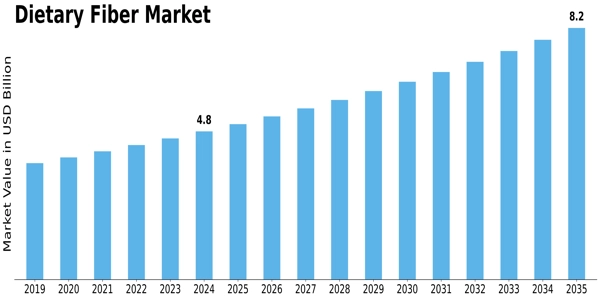

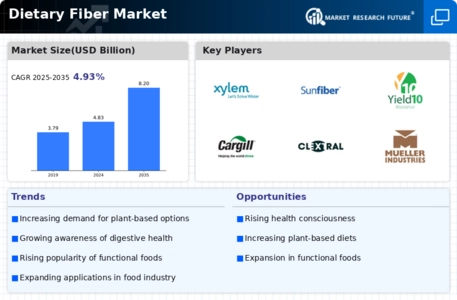
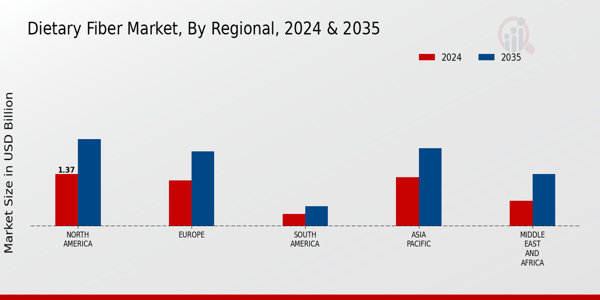

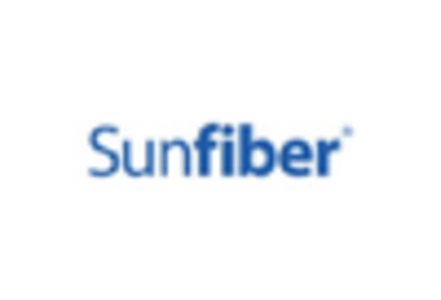
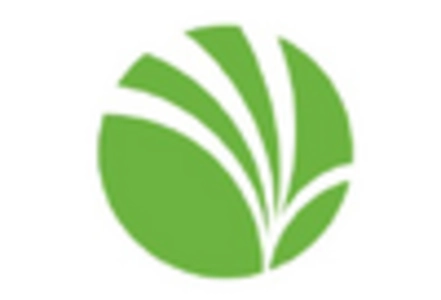

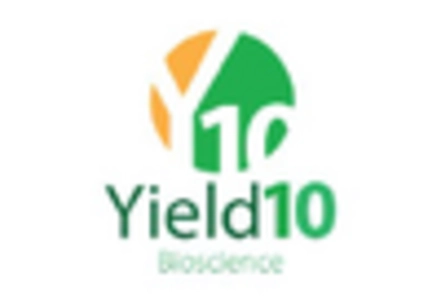
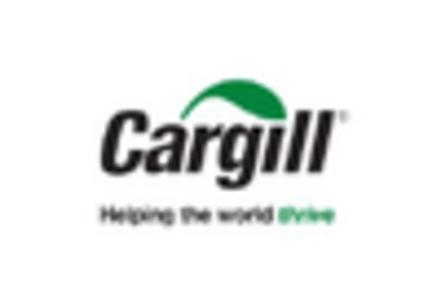
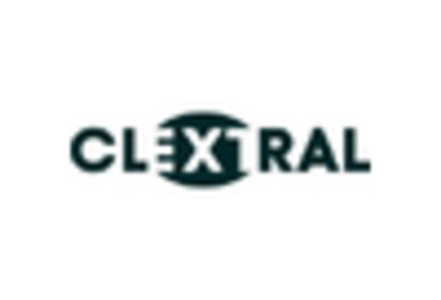
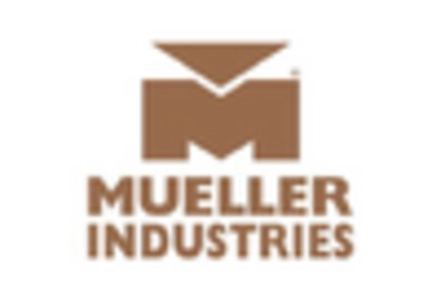
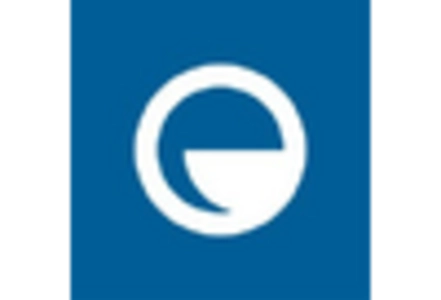
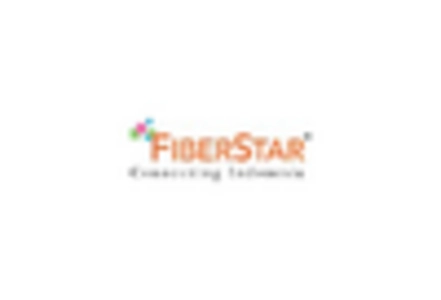
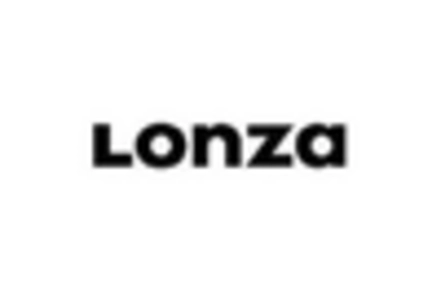
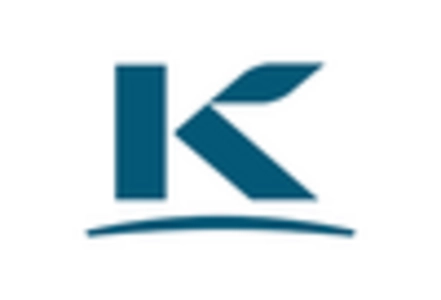

Leave a Comment